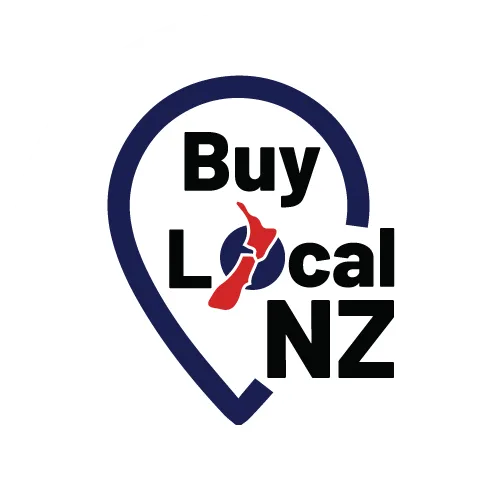
7 Facebook Advertisement Strategies Local Retailers Must Know
You'll boost your local retail success with these essential Facebook advert strategies: Define precise location-based audiences, create mobile-first designs, track store visits, build custom audiences from your database, implement location targeting, utilise dynamic product adverts, and test multiple advert formats. When you combine these powerful tactics with Facebook's sophisticated targeting capabilities, you'll drive more foot traffic and sales to your physical store. These proven strategies can transform your local retail marketing game.
Main Points
- Target local audiences within 8-16 kilometres during business hours and create custom audiences from recent area visitors.
- Upload customer contact lists to Facebook Ads Manager and implement offline event tracking to measure store visit effectiveness.
- Design mobile-first advertisements with bold visuals and minimal text, focusing on compelling offers within the first three seconds.
- Utilise dynamic product ads to automatically showcase inventory and retarget customers who abandoned shopping trolleys.
- Mix different ad formats including carousels, videos, collections, and stories to engage local audiences effectively.
Define Your Local Target Audience With Precision
Before launching any Facebook advertisement campaign, you'll need to identify exactly who you want to reach in your local area. Break free from broad targeting by focusing on specific demographics, behaviours, and interests that match your ideal local customer.
Use Facebook's location targeting to pinpoint neighbourhoods, postcodes, or radius around your shop.
Take advantage of custom audiences by uploading your existing customer database and creating lookalike audiences that mirror your best buyers.
Don't forget to factor in age groups, income levels, and lifestyle preferences relevant to your products.
Track which local events and activities your target audience attends, then incorporate these insights into your targeting strategy.
Create Mobile-First Advertisement Designs For Local Shoppers
Over 90% of Facebook users access the platform through mobile devices, making mobile-first design essential for local retail advertising. You will need to adapt your creative strategy to capture attention on smaller screens where users quickly scroll through their feeds.
Keep your visuals bold and text minimal. Use square or vertical formats that take up more screen space, and ensure your images are sharp at all sizes. Place your most compelling offer or message in the first three seconds of video content, or at the top of static images.
Do not forget to leverage Facebook's mobile-specific features like Collection ads and Stories. These formats let you showcase multiple products while maintaining a seamless mobile experience.
Test your advertisements on different devices before launching to ensure they are readable and engaging across all screen sizes.
Utilise Store Visit Campaigns To Drive Customer Traffic
You'll gain powerful insights by tracking how many customers visit your physical shop after seeing your Facebook advertisements.
Using Facebook's store visit optimisation, you can set specific geographic targeting to reach shoppers within your desired radius - whether that's 8 kilometres or 80.
Track In-person Visit Data
While many retailers focus solely on online metrics, Facebook's Store Visits campaign objective lets you track how effectively your advertisements drive foot traffic to your physical location.
Set up offline event tracking through your Business Manager account to see exactly how many customers visit your shop after viewing your advertisements.
You'll gain valuable insights into which advertisement formats and messages resonate most with local shoppers. Use this data to optimise your campaigns and allocate your budget toward the best-performing advertisements.
Track metrics like cost per store visit and conversion windows to understand your true return on investment.
Remember to customise your attribution settings to match your typical customer journey, as some shoppers may take days or weeks between seeing your advertisement and visiting your shop.
Set Radius Targeting Goals
Strategic radius targeting enables local retailers to concentrate their advertising expenditure on customers most likely to visit their shops.
You'll want to set your radius based on your shop's location, local competition, and customer travel patterns. In dense urban areas, target within 1.6-4.8 kilometres; for suburban locations, expand to 8-16 kilometres.
Test different radius settings to find your optimal range. Start with a smaller radius and gradually increase it while monitoring conversion rates.
You can adjust targeting based on peak shopping hours and local events that drive traffic to your area. Don't forget to exclude areas with natural barriers like rivers or motorways that might prevent easy shop access.
Build Custom Audiences From Your Customer Database
Start building your custom audiences by uploading your shop's customer contact list directly to Facebook's Ads Manager.
You'll want to prioritise matching email addresses since they typically provide the highest match rates with Facebook's user database.
Once uploaded, you can segment your audience based on purchase history, demographics, or engagement levels to create more targeted campaigns.
Upload Your Contact List
Because your existing customers already know and trust your brand, they're the perfect foundation for building targeted Facebook ads. Take control of your marketing by uploading your customer contact list to Facebook's Ads Manager. You'll activate powerful targeting capabilities that put you in charge of your campaign's success.
| Contact Type | Value | Action Required |
|---|---|---|
| High Impact | Clean & Format | |
| Phone | Direct Link | Add Country Code |
| Name | Personal Touch | Standardise Format |
| Address | Local Reach | Verify Current |
| Purchase History | ROI Driver | Update Recent |
Simply export your customer data in CSV format, confirm it matches Facebook's template requirements, and upload through the Audiences section. Your list will transform into a dynamic custom audience, ready to power your targeted campaigns and break free from generic advertising approaches.
Match Electronic Mail Addresses First
When building custom audiences from your uploaded contact list, email addresses offer the highest match rates on Facebook. While phone numbers and physical addresses can work, they're less reliable for matching your customers to their Facebook profiles. You'll get better results by focusing on email addresses first.
Make sure you're collecting email addresses at every customer touchpoint - during sales, through your website, and at in-store events.
Clean your email list regularly by removing duplicates and fixing formatting issues. The more accurate your data, the better your match rate will be.
Don't worry if you can't match every customer - a 50-70% match rate is typical.
Even with partial matches, you'll create a valuable audience for your Facebook advertising campaigns.
Segment For Better Targeting
Once you've built your initial custom audience, dividing it into specific segments will dramatically improve your targeting precision. Break down your customer database into targeted groups based on purchasing behaviour, interests, and engagement levels to create precise campaigns that resonate with each segment.
| Segment Type | Marketing Goal | Action Steps |
|---|---|---|
| High Spenders | Reward loyalty | Send VIP offers |
| Recent Buyers | Cross-sell | Showcase complementary items |
| Cart Abandoners | Recovery | Offer time-sensitive discounts |
| Seasonal Shoppers | Reactivation | Highlight new collections |
| Engaged Followers | Brand advocacy | Share exclusive previews |
Don't waste your advertising budget on broad audiences. Take control of your marketing by creating distinct segments that allow you to deliver personalised messages that speak directly to your customers' needs and desires.
Use Location-Based Advertisement Targeting For Better Results
Location-based targeting stands as one of the most powerful tools in Facebook's advertising arsenal for local retailers.
You'll gain direct access to customers within your business radius while maximising your advertising spend on people who can actually visit your store.
Set your targeting parameters to reach potential customers with these proven location-based strategies:
- Target users within an 8-16 kilometre radius of your store during business hours
- Create custom audiences based on people who've recently visited your neighbourhood
- Exclude areas where your competitors have a stronger presence
- Adjust radius settings based on population density and local transport options
Break free from broad targeting that wastes your budget.
Master Facebook's Dynamic Product Adverts
Dynamic Product Ads represent a game-changing tool for local retailers looking to showcase their inventory on Facebook. You'll love how these advertisements automatically display your most relevant products to people who've shown interest in your store, whether they've visited your website or browsed your application.
Set up your product catalogue by uploading your inventory feed, then let Facebook's algorithm do the heavy lifting. It'll track user behaviour and show them items they're most likely to purchase, from items they've viewed to related products they might enjoy.
You can even retarget customers who abandoned their shopping trolleys, giving them a gentle reminder about products they left behind.
Don't forget to optimise your product images and descriptions - they're essential for catching attention in crowded news feeds.
Test Different Advertisement Formats For Local Engagement
Although many retailers stick to a single advertisement format, experimenting with Facebook's diverse advertisement types can markedly boost your local engagement. Break free from conventional approaches and tap into your community's unique preferences by testing multiple formats.
Try these attention-grabbing options:
- Carousel advertisements showcasing your shopfront, team, and best-selling products to create a visual story of your local presence.
- Video advertisements capturing behind-the-scenes moments and customer testimonials to build authentic connections.
- Collection advertisements featuring your product catalogue alongside lifestyle imagery that reflects your neighbourhood.
- Stories advertisements with location-specific content and time-sensitive offers to drive immediate foot traffic.
Mix and measure these formats to discover what resonates most with your local audience, then scale your successful approaches.
FAQs
How Much Should a Local Shop Owner Budget for Their First Facebook Advertisement Campaign?
Begin with $10-20 per day for your first campaign. You will want to test different audiences and content for 2-3 weeks before increasing your spending based on what is performing best.
What's the Perfect Frequency for Publishing Facebook Advertisements to Prevent Audience Weariness?
You'll want to keep your advert frequency between 1-3 times per week. If you're seeing the same people more than 4 times weekly, they'll likely tune out your message.
Should Local Retailers Engage a Professional to Manage Their Facebook Advertising?
You'll benefit from hiring a professional if you lack time or expertise, but begin managing advertisements yourself to understand the basics and make informed decisions about your advertising investments.
How Long Should Retailers Run Facebook Advertisements Before Evaluating Campaign Success?
Rome wasn't built in a day! You will need to run your advertisements for at least 2-3 weeks to gather meaningful data and understand what is working, then move away from underperforming campaigns.
Can Facebook Advertisements Be Integrated With Other Regional Marketing Channels Effectively?
You can seamlessly combine Facebook advertisements with email marketing, local SEO, Google advertisements, and in-store promotions. Cross-channel integration allows you to amplify your message and track customer journeys across multiple touchpoints.

